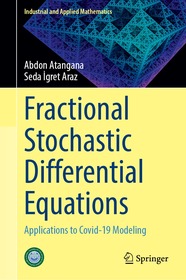
-
20% KEDVEZMÉNY?
- A kedvezmény csak az 'Értesítés a kedvenc témákról' hírlevelünk címzettjeinek rendeléseire érvényes.
- Kiadói listaár EUR 58.84
-
24 403 Ft (23 241 Ft + 5% áfa)
Az ár azért becsült, mert a rendelés pillanatában nem lehet pontosan tudni, hogy a beérkezéskor milyen lesz a forint árfolyama az adott termék eredeti devizájához képest. Ha a forint romlana, kissé többet, ha javulna, kissé kevesebbet kell majd fizetnie.
- Kedvezmény(ek) 20% (cc. 4 881 Ft off)
- Kedvezményes ár 19 522 Ft (18 593 Ft + 5% áfa)
Iratkozzon fel most és részesüljön kedvezőbb árainkból!
Feliratkozom
24 403 Ft

Beszerezhetőség
Megrendelésre a kiadó utánnyomja a könyvet. Rendelhető, de a szokásosnál kicsit lassabban érkezik meg.
Why don't you give exact delivery time?
A beszerzés időigényét az eddigi tapasztalatokra alapozva adjuk meg. Azért becsült, mert a terméket külföldről hozzuk be, így a kiadó kiszolgálásának pillanatnyi gyorsaságától is függ. A megadottnál gyorsabb és lassabb szállítás is elképzelhető, de mindent megteszünk, hogy Ön a lehető leghamarabb jusson hozzá a termékhez.
A termék adatai:
- Kiadás sorszáma 1st ed. 2022
- Kiadó Springer Nature Singapore
- Megjelenés dátuma 2023. január 7.
- Kötetek száma 1 pieces, Book
- ISBN 9789811660481
- Kötéstípus Puhakötés
- Lásd még 9789811660450
- Terjedelem330 oldal
- Méret 235x155 mm
- Súly 534 g
- Nyelv angol
- Illusztrációk XVI, 330 p. 1 illus. Illustrations, black & white 507
Kategóriák
Hosszú leírás:
The focus of this book is on providing students with insights into geometry that can help them understand deep learning from a unified perspective. Rather than describing deep learning as an implementation technique, as is usually the case in many existing deep learning books, here, deep learning is explained as an ultimate form of signal processing techniques that can be imagined.
To support this claim, an overview of classical kernel machine learning approaches is presented, and their advantages and limitations are explained. Following a detailed explanation of the basic building blocks of deep neural networks from a biological and algorithmic point of view, the latest tools such as attention, normalization, Transformer, BERT, GPT-3, and others are described. Here, too, the focus is on the fact that in these heuristic approaches, there is an important, beautiful geometric structure behind the intuition that enables a systematic understanding. A unified geometric analysis to understand the working mechanism of deep learning from high-dimensional geometry is offered. Then, different forms of generative models like GAN, VAE, normalizing flows, optimal transport, and so on are described from a unified geometric perspective, showing that they actually come from statistical distance-minimization problems.
Because this book contains up-to-date information from both a practical and theoretical point of view, it can be used as an advanced deep learning textbook in universities or as a reference source for researchers interested in acquiring the latest deep learning algorithms and their underlying principles. In addition, the book has been prepared for a codeshare course for both engineering and mathematics students, thus much of the content is interdisciplinary and will appeal to students from both disciplines.
Tartalomjegyzék:
Part I Basic Tools for Machine Learning: 1. Mathematical Preliminaries.- 2. Linear and Kernel Classifiers.- 3. Linear, Logistic, and Kernel Regression.- 4. Reproducing Kernel Hilbert Space, Representer Theorem.- Part II Building Blocks of Deep Learning: 5. Biological Neural Networks.- 6. Artificial Neural Networks and Backpropagation.- 7. Convolutional Neural Networks.- 8. Graph Neural Networks.- 9. Normalization and Attention.- Part III Advanced Topics in Deep Learning.- 10. Geometry of Deep Neural Networks.- 11. Deep Learning Optimization.- 12. Generalization Capability of Deep Learning.- 13. Generative Models and Unsupervised Learning.- Summary and Outlook.- Bibliography.- Index.
Több





